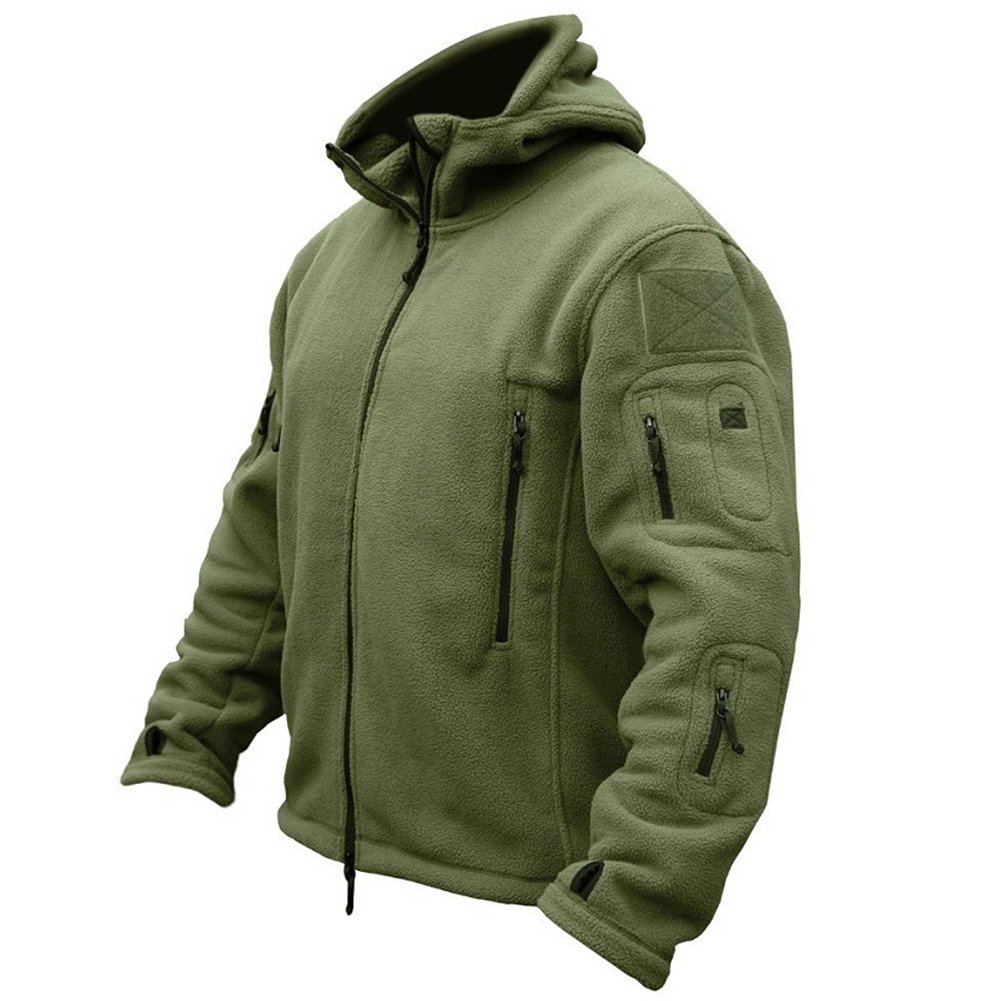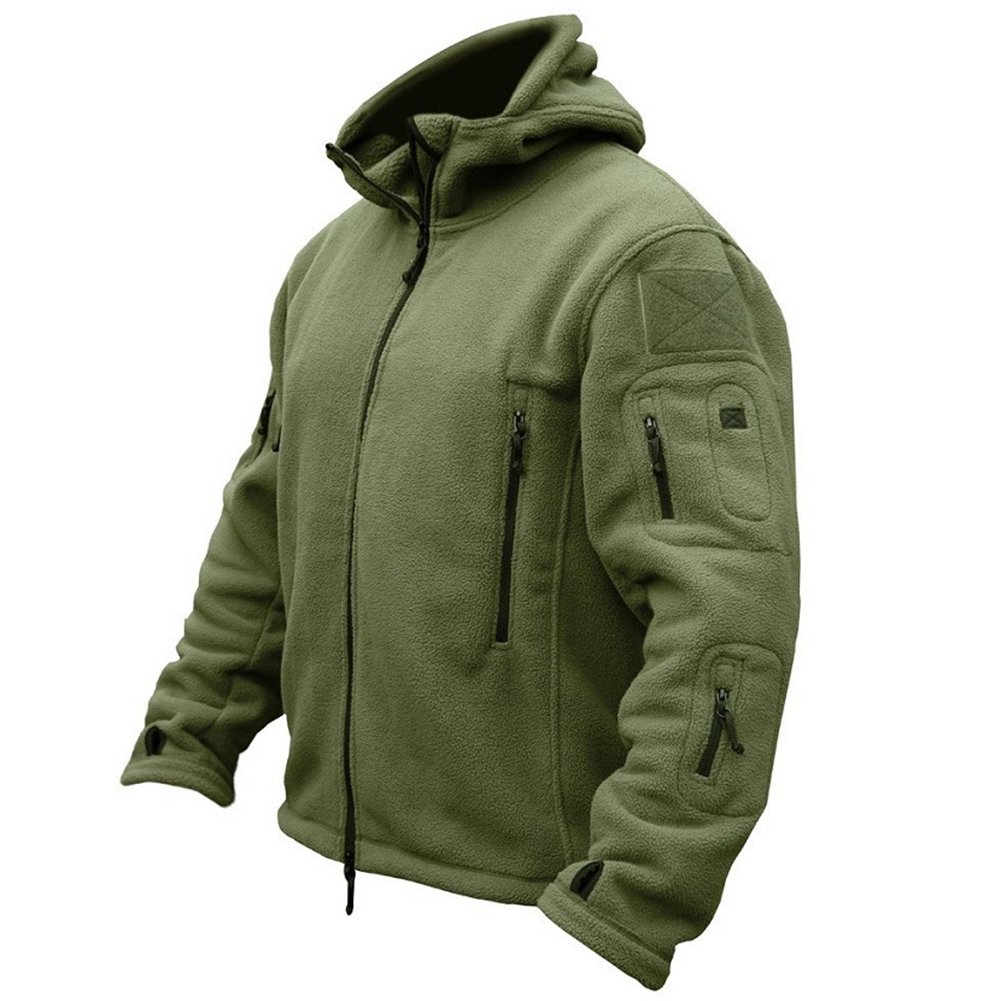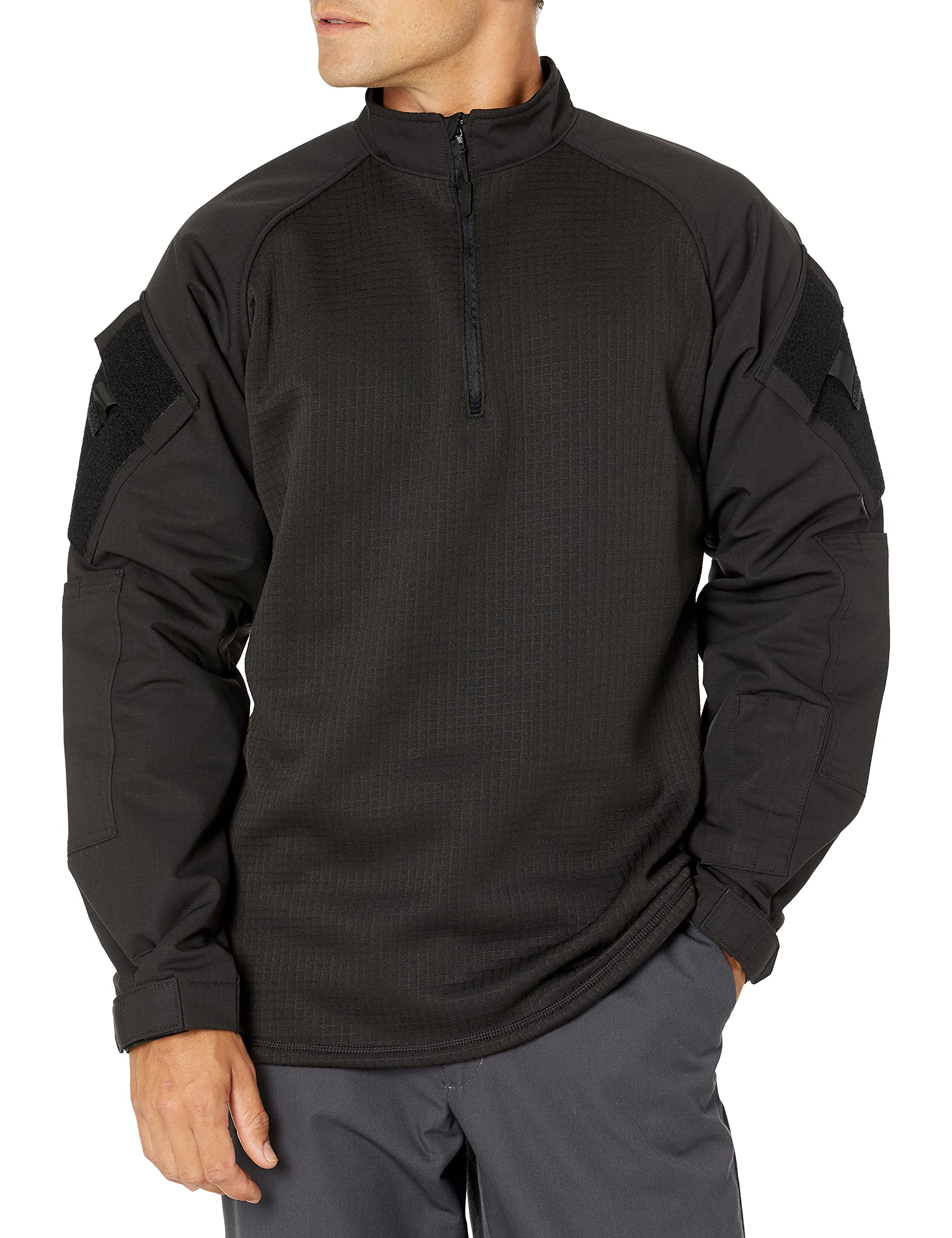“`xml
Operating in cold weather requires specialized gear to ensure personnel remain safe, comfortable, and effective during extreme conditions.
Tactical equipment tailored for frigid environments utilizes innovative materials and thoughtful designs to shield against severe temperatures, wind, and moisture.
Essential items, including insulated outerwear and specialized footwear, play a crucial role in sustaining performance in demanding winter environments.
When choosing cold weather tactical gear, focus on insulation, moisture control, and durability.
Seek out products that provide a superior warmth-to-weight ratio, effectively wick away perspiration, and withstand rugged use.
Be mindful of features such as windproof fabrics, water-resistant finishes, and adjustable ventilation to help regulate body temperature as activity levels fluctuate.
Making the right choice in cold weather tactical gear can significantly influence the success of an operation in harsh winter conditions.
Let’s take a look at some of the top options to keep you warm, dry, and ready for action when the temperature drops.
Top Tactical Equipment for Cold Weather Operations
In dropping temperatures, your gear must perform.
We’ve compiled a list of the best tactical equipment designed to endure freezing conditions, helping you stay warm, safe, and mission-ready.
From insulated boots to sophisticated layering systems, these items will help you tackle the cold.
ReFire Gear Tactical Fleece Jacket
This adaptable tactical fleece jacket provides warmth and functionality, appealing to both outdoor enthusiasts and military-style fans.
- Ample storage with multiple pockets
- Soft and warm fleece fabric
- Military-style design
- Sizes tend to run small
- Reports of zipper quality issues
- Limited color choices
This ReFire Gear jacket proves practical for chilly weather, featuring soft fleece that keeps you warm and seven tactical pockets for your essentials.
It’s great for hiking, climbing, or any outdoor activity where warmth and organization are essential.
The military-inspired style gives the jacket a rugged appearance sure to attract attention.
It includes thumb holes for extra warmth and comfort, along with a hoodie for head protection against the elements.
The double zipper enhances versatility, enabling you to regulate ventilation as needed.
Keep in mind that sizing is on the smaller side, so consider ordering a size up for the best fit.
Some users have mentioned zipper durability concerns, so handle with care.
Although it comes in limited colors, its impressive functionality compensates for this.
Whether you’re an outdoor enthusiast or simply enjoy the tactical aesthetic, this fleece jacket is a worthy addition to your cold-weather gear collection.
281Z Fleece Boot Liners
These warm and versatile boot liners are essential for your cold weather operations.
- Exceptional insulation
- Moisture-wicking
- Multi-purpose usage
- Sizing may pose a challenge
- Can be overly warm for milder conditions
- Pricey compared to standard liners
Designed for cold weather activities, the 281Z boot liners feature Polartec Classic 200 fleece, ensuring outstanding warmth and moisture-wicking properties.
Their versatility allows compatibility with various sock types and footwear.
Whether you’re skiing, working outside, or relaxing at home, these liners have you covered.
They fit snugly to prevent slipping inside your boots, while flatlock seams help eliminate discomfort.
Be cautious about sizing—consult the chart carefully for the best fit.
Although they excel in extreme conditions, you may find them too warm for milder weather.
Despite the higher price tag, the quality and performance make these boot liners a worthy investment for your cold-weather gear collection.
ReFire Gear Tactical Softshell
This practical jacket for cold weather operations combines protection with functionality.
- Waterproof and windproof
- Multiple pockets for gear
- Warm fleece lining
- Questions about zipper quality
- Sizing might be problematic
- Hood may feel oversized
Engineered for comfort in tough conditions, the ReFire Gear Tactical Softshell features a polyester shell that repels water and blocks wind while trapping warmth with its fleece lining.
Adjustable elements such as hook-and-loop cuffs and a drawstring waist help customize the fit.
With seven zippered pockets, storage won’t be a problem.
Large arm patches provide space for morale badges, personalizing your look.
Ventilation zippers under the arms enhance temperature regulation during active use, making the jacket adaptable for various seasons and activities.
Whether hiking, hunting, or on duty, this jacket meets your demands.
| Feature | Detail |
|---|---|
| Material | 100% Polyester |
| Lining | Fleece |
| Pockets | 7 zippered |
| Adjustable | Cuffs, waist, hood |
| Seasons | Winter, autumn, spring |
Tru-Spec Winter Combat Shirt
This adaptable cold weather shirt stands out for its warmth and tactical design.
- Breathable grid fleece body
- Adjustable cuffs for comfort
- Durable and protective construction
- Some users report small sizing
- Limited color variety
- Could be too warm indoors
The Tru-Spec Men’s Winter Combat Shirt blends functionality with comfort for cold weather scenarios.
Its grid fleece body promotes breathability while wicking away moisture, keeping you dry during vigorous activity.
The fleece-lined sleeves provide extra warmth suitable for colder settings.
This shirt’s design is efficient and functional, featuring a quarter-zip front and a mandarin collar for added neck protection.
Seamless shoulders minimize chafing, especially beneficial when wearing armor or tactical vests.
Additional features include pen stalls and a glint tape holder, enhancing overall utility.
Durability is a highlight of this combat shirt, thanks to a polyester and spandex blend that offers flexibility without compromising strength.
Anti-abrasion elbow patches enhance longevity in high-wear areas.
While primarily designed for tactical use, it can also serve various outdoor activities or act as a warm base layer for winter sports.
281Z Fleece Boot Liners
Consider these versatile fleece boot liners for your cold weather tasks, featuring outstanding insulation and moisture-wicking capabilities.
- Versatile for different activities
- Constructed from high-quality Polartec fleece
- Ergonomic design for a secure fit
- Some sizes may run small
- Limited color choices
- Higher price compared to basic socks
The 281Z Military Warm Boot Liners keep your feet warm and dry for cold weather operations.
Made from Polartec Classic 200 fleece, they provide exceptional insulation while remaining breathable.
Their anatomical shape ensures a snug fit, preventing them from sliding down inside boots.
The versatility of these liners shines through, suitable for winter sports, outdoor tasks, or even as cozy slipper socks indoors.
Flat seams help reduce friction and pressure points, enhancing comfort during long wear.
Durability is a standout feature of these boot liners, having been tested under combat conditions, assuring they withstand rigorous use.
Eco-friendly materials align with OEKO-TEX standards, ensuring freedom from harmful substances.
When cleaning is needed, you can machine wash at 104°F (40°C) or opt for hand washing for best results.
Buying Guide
When choosing tactical equipment for cold weather operations, functionality and durability should top your list.
Keep these significant factors in mind:
Insulation
Look for gear utilizing high-quality insulation materials, such as down or synthetic fibers, which effectively trap heat while remaining lightweight.
Waterproofing
Select items featuring strong waterproof coatings or membranes to keep you dry in snowy or wet environments.
Breathability
Prioritize breathable fabrics that allow moisture to escape, helping to prevent sweat buildup and maintain comfort during physical exertion.
Layering Compatibility
Choose pieces that fit well within a layering system, allowing you to adjust your attire based on activity level and temperature variations.
Mobility
Ensure your gear allows for unrestricted movement.
Seek out articulated joints and flexible fabrics in critical areas.
Durability
Look for reinforced stitching and abrasion-resistant materials, particularly in high-stress zones.
Visibility Options
Consider items with both high-visibility and camouflage options to cater to various tactical circumstances.
Compatibility with Other Gear
Ensure your selections work well with your existing equipment, such as helmets, backpacks, and communication devices.
Temperature Rating
Check temperature ratings on sleeping bags and insulated clothing to ensure alignment with your anticipated operating conditions.
Weight and Packability
Strike a balance between warmth and protection with weight and packability for easier transport and deployment.
Frequently Asked Questions
Proper gear and strategies are vital for cold weather operations.
Here are some common inquiries regarding equipment, modifications, and methods for tactical efficiency in frigid environments.
What type of clothing should I consider for tactical operations in low temperatures?
Layer your clothing to maximize insulation and adaptability.
Begin with a moisture-wicking base layer, follow with an insulating mid-layer, and complete the ensemble with a waterproof, breathable outer shell.
Materials like merino wool or synthetic fabrics retain heat even when wet.
Remember to include insulated gloves and a warm hat or balaclava to protect your extremities.
Ensure your clothing permits complete range of motion without sacrificing warmth.
What modifications are necessary for operating firearms in sub-zero temperatures?
Utilize cold-weather lubricants that won’t thicken or freeze.
Replace standard springs with heavier ones to maintain functionality.
Consider larger trigger guards to accommodate gloved hands.
Add rubber padding to metal surfaces to guard against skin contact in extreme cold.
Keep your firearm close to your body when not in use to maintain optimal operating temperature.
How can I maintain agility and quick responses even with heavy cold-weather gear?
Engage in movement drills while wearing complete cold-weather gear to practice.
Focus on maintaining flexibility through consistent stretching exercises.
Opt for gear featuring articulated joints for enhanced mobility.
Choose lighter, high-tech insulation materials to minimize bulk.
Ensure your boots allow for proper ankle mobility.
Frequent training in your cold-weather attire will improve muscle memory and response times.
What are the best types of boots for ensuring warmth and traction during winter field operations?
Seek insulated, waterproof boots with aggressive treads.
Vibram Arctic Grip or equivalent soles offer excellent traction on icy surfaces.
Consider boots with 400-600 grams of insulation for extreme cold.
Be sure your boots provide adequate space for thick socks and toe warmers.
Gaiters add extra protection against snow infiltration.
Break in your boots before operations to avoid blisters and discomfort.
Are there any specific considerations for communications gear in frigid environments?
Utilize cold-resistant batteries and keep spares close to your body for warmth.
Opt for radios with large buttons for ease of use with gloves.
Consider throat mics or in-ear systems to minimize exposure to the cold.
Protect antennas from ice buildup and use waterproof cases or bags to guard electronics from moisture.
Test your gear in cold conditions to uncover any potential issues before deployment.
What measures do armed forces take to prevent fogging on optics and eyewear in cold climates?
Military personnel employ anti-fog coatings on lenses and optics, along with double-pane lenses or goggles featuring thermal barriers.
Correct ventilation is critical to prevent moisture accumulation.
To keep eyewear dry and clean, using a neck lanyard to store glasses inside your jacket when not in use is advisable.
Some units may also use small fans or defrosting systems for critical optics.
“`






